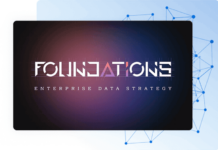Data analytics is the science of analyzing a business problem’s raw data to derive conclusions. Organizations must make informed decisions. When utilized effectively, data can provide valuable insights into past performance, enabling companies to make better decisions for the future through corrective maintenance.
This article will discuss the four types of data analytics categories and practical ways businesses can use them to achieve their goals. Every category has a distinct objective and role in data analytics for business. Businesses that succeed primarily stem from their ability to evaluate and draw conclusions from data.
Prescriptive and predictive analytics conclude future data, whereas descriptive and diagnostic analytics are primarily based on prior data analysis processes. To get the most out of the available data and support your company’s long-term objectives, asking the appropriate questions for each type of analytics is critical. Therefore, it is necessary to hire data engineers who know the correct questions to ask.
1. Descriptive Analytics: Understanding Past Performance
Descriptive analytics is the primary form of analytics, the basis for all other forms. It enables analyzing data and briefly explaining past or present events. Descriptive analytics addresses the question, “What happened?”
Let’s say, for instance, that you are examining your business’s data and discover a seasonal uptick in sales of a particular product—a video game system. Descriptive analytics can tell you this: “Every year, sales of this video game console rise in October, November, and early December.” Because charts, graphs, and maps can clearly illustrate data patterns and dips and spikes, data visualization is perfect for conveying descriptive analysis.
2. Diagnostic Analytics: Identifying Root Causes
It’s one of the content analysis methods that helps us figure out why. We get to the “what” causing it to happen rather than just an observation, such as whether the chart is heading upward or downward. The capacity to query large datasets and link those queries to goals and business requirements is crucial in this situation.
Picture visiting a doctor, and all they do is glance at you, say something like, “Oh, yeah, you look sick,” and then turn to go. Your health won’t benefit much from that. We must comprehend the underlying cause of the illness.
To help you feel better, the doctor should observe, diagnose, and then provide a treatment plan. Similar steps apply to analytics: you identify the descriptive analysis after observing, then proceed to the diagnosis.
3. Predictive Analytics: Forecasting Future Trends
Predictive analytics is a tool that helps businesses “see the future” and forecast “what is likely to happen.” Modeling strategies, statistical modeling, and available data are combined to forecast performance and future results.
Business decision-making based on potential outcomes finds predictive modeling particularly helpful. Regression models, neural networks, and decision trees are standard procedures in predictive analytics.
Thirteen predictive analytics are more complex than descriptive and diagnostic analytics, and they are widely used in most firms but still need to be utilized.
4. Prescriptive Analytics: Optimizing Decision-Making
Although only some organizations can use it, prescriptive analytics is one of the most significant factor analysis goals. It aims to advise organizations on what steps to take to prevent future issues.
This kind of cluster analysis uses a variety of cutting-edge instruments and technologies, including machine learning, artificial intelligence, and algorithms. Because of organizations’ technology and algorithms, they also search for external information and internal historical data.
Prescriptive analytics, in its most basic form, combines the three analytics discussed above to assist organizations in deciding on the best course of action. From now on, it’s a series of acts rather than simply one action.
Better Data Analytics for Improved Decision-Making
Every business professional who makes decisions must have a fundamental grasp of data analytics. With big data access becoming more widespread than ever, you can empower yourself to identify crucial opportunities or warning signs that the data conveys, enhancing your confidence and control over your decisions.
Those in the following professions can profit from having business data analytics skills:
- Marketers develop marketing plans using performance data from previous campaigns, industry trends, and customer data.
- Product managers examine user, industry, and market data to enhance their companies’ offerings.
- Finance specialists predict the financial paths of their firms by utilizing industry trends and historical performance data.
- Professionals in human resources and diversity, equity, and inclusion who learn about their workforce’s beliefs, drives, and actions and combine that information with data on industry trends to implement significant changes in their companies.
Conclusion
Analytics has four levels: describe, diagnose, predict, and describe. When all four are combined, a comprehensive data and analytical approach can unlock the potential for growth and improvement. The organization’s data and analytical strategy is incomplete if any of the four aren’t functioning correctly or if one is absent.
For data literacy to be practical, all data analysis methods of analytics must be present within an organization. Furthermore, hire remote data engineers to utilize each level fully. The ultimate goal is for such choices to align with the company’s most significant goals and objectives, keeping your focus and purpose clear.

























![“Does Everyone Hear Me OK?”: How to Lead Virtual Teams Effectively iStock-1438575049 (1) [Converted]](https://www.europeanbusinessreview.com/wp-content/uploads/2024/11/iStock-1438575049-1-Converted-100x70.jpg)





